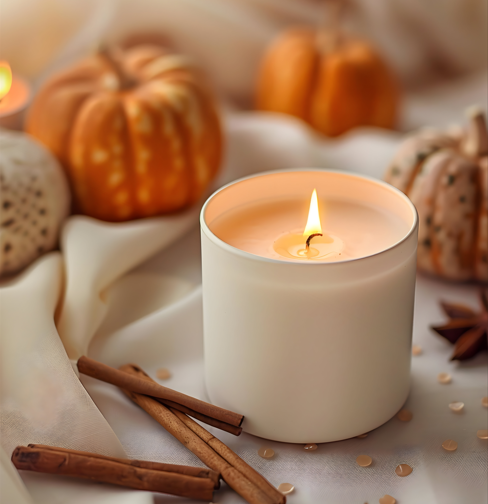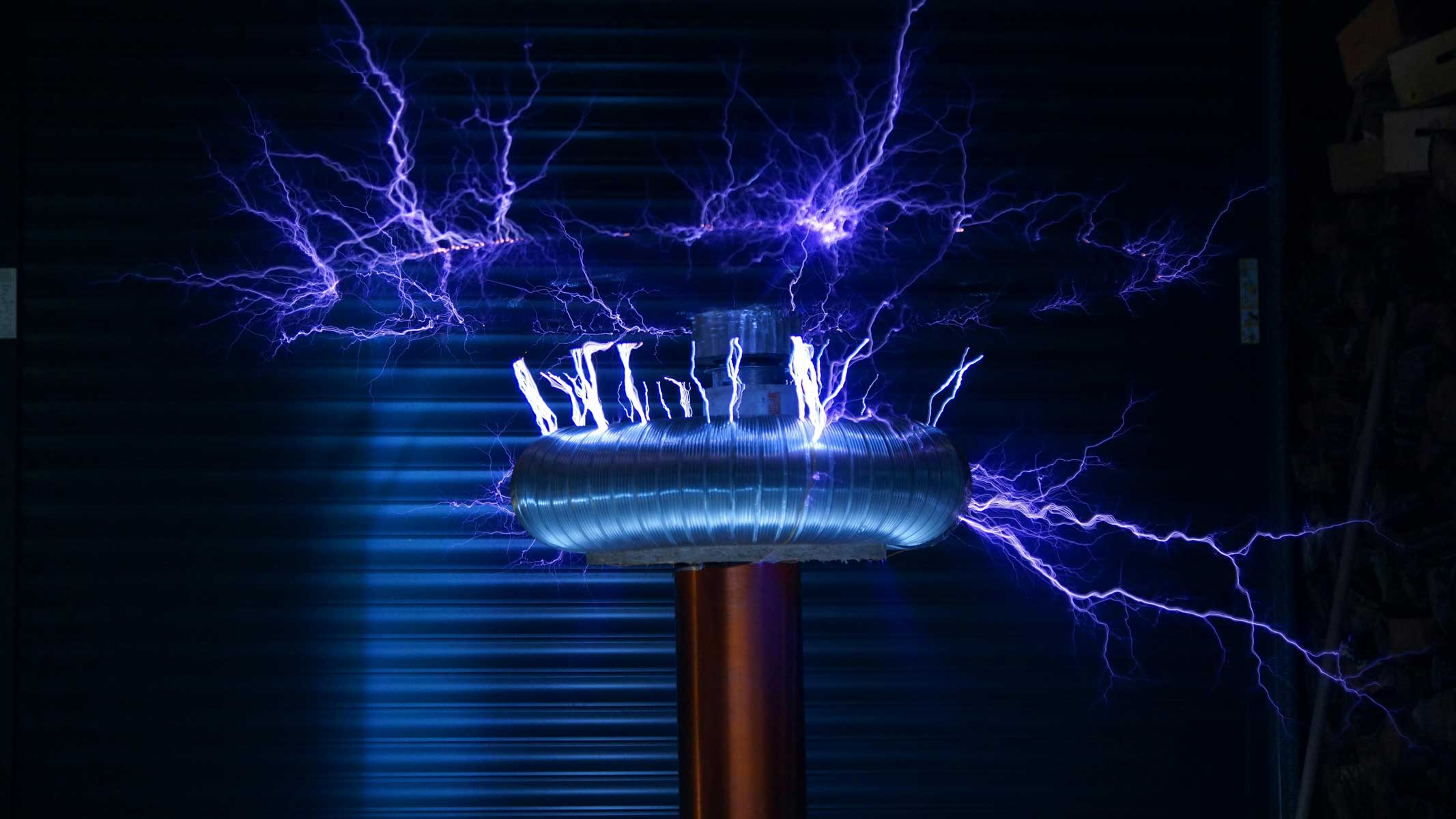
Summary
- Seasonal candles, sprays, and plug-ins release VOCs that can harm indoor air quality and trigger health issues.
- Common VOCs include benzene, formaldehyde, toluene, limonene, and linalool—linked to headaches, allergies, and asthma flare-ups.
- Essential oils, though natural, can still emit VOCs when burned or diffused, lowering air quality if overused.
- Cleaner alternatives include simmer pots, real greenery, beeswax or soy candles, and improved ventilation.
- High-quality air purifiers, like Intellipure’s, capture ultrafine particles and VOCs to keep homes healthier during the holiday season.
Fall is finally here—and you’re hosting friends and family this year. The table is set, guests are on their way, and every corner of your house is filled with the heartwarming scents of cinnamon, vanilla and, yes, pumpkin spice. But here’s the thing: Most of these yummy smells aren’t actually coming from a pie in the oven. They’re coming from candles, sprays and plug-ins, designed to mimic the real deal.
To our noses, an actual pumpkin pie and a pumpkin spice candle might smell alike, but to our lungs, they’re worlds apart.
Let’s break down the facts behind the fragrances, so you can feel cozy and breathe easy this season.
Sneaky Seasonal Smells

Not all smells are created equal. While a baking pie fills the air with the very real scent of a mouthwatering dessert, a lit candle fills it with artificial and potentially harmful chemicals. (Ew.)
Both can make your home feel warm and inviting. But one also quietly compromises the air you and your guests are breathing.
We get it—fall fragrances do smell delicious, and they’re temptingly easy to use. It’s why pumpkin spice candles and cinnamon-apple plug-ins fly off the shelves every season. Unfortunately, most good-smelling, “odor-fighting” fragrances don’t fight odors at all. They just add invisible pollutants you don’t want your guests (or yourself) breathing, like the aforementioned chemicals and a host of volatile organic compounds (VOCs).
So, what are VOCs?
They’re gases emitted from certain solids or liquids. Some may even sound harmless (for instance, “limonene” gives citrus its tangy scent). Unfortunately, when these VOCs mix with other indoor air components, they can create harmful irritants linked to unpleasant health concerns.
Common VOCs include:
- Benzene, which is found in scented candles and associated with headaches and nausea.
- Formaldehyde can irritate the eyes, nose and throat. Plus, it can worsen asthma and/or allergy symptoms.
- Toluene can contribute to fatigue and difficulty focusing.
- Limonene and linalool are common in citrus and floral sprays, but when mixed with indoor air, they can form secondary pollutants (harmful compounds that form when VOCs react with other substances found in indoor air), such as:
- Ultrafine particles (PM2.5)
- Hydroperoxides
- Acetone
In other words, your plug-in may be festive, but it’s also running a tiny chemistry lab in your living room. But here’s the good news: High-quality air purifiers remove particles and reduce airborne VOCs. Intellipure’s purifiers are specifically designed to capture ultrafine, teeny tiny particles down to 0.007 microns (that’s way smaller than PM2.5 particles).
Why This Matters

Holiday mode usually means windows shut, heat on, oven working overtime. Add candles, sprays and plug-ins, and suddenly you’re sealing in a lot more than cozy vibes—you’re trapping unwelcome VOCs, too. Here’s what that can look (and feel) like over time:
- Headaches
- Sniffling and sneezing
- Scratchy throats
- Watery eyes
- Allergy-like symptoms
- Fatigue
- Difficulty concentrating
- Asthma flare-ups
For kids, older adults or scent-sensitive guests, these effects can hit pretty hard. And with repeated exposure, indoor pollutants have been linked to even more serious breathing issues.
The Clean-Air Secret
As hosts, we go above and beyond to make our homes feel welcoming. We light candles that promise to fight odors, spritz the air before guests arrive or leave scent-diffusing plug-ins humming quietly in the background. We want to create a sense of calm and coziness. To make sure our guests feel well cared for in our space.
In reality, the best way to do just that is with (scientifically) clean, fresh air. Most “odor fighters” don’t remove smells at all—they just mask them with stronger scents. That means your guests are not only breathing food particles, pet dander and dust. They’re getting a big whiff of synthetic fragrances, too. For someone with asthma or allergies, that “cozy” get-together can turn into a not-so-silent night. (That’s right—poor breathing means more snoring.)
What about essential oils?

Whether used in diffusers, candles, or sprays, essential oils aren’t an automatic fix for safer scented air.
Essential oils may be natural—or even organic—but studies show they can still release harmful VOCs and lower indoor air quality. (Remember limonene and linalool? They’re often found in citrus oils.) As with any air pollutants, the higher the strength and concentration, the higher the risks. Less essential oils in your air means less VOCs. So enjoy these fragrances in moderation, too.
Host Without the Hazards
If you’re thinking, “This stinks!” Don’t worry. You don’t have to banish your favorite seasonal scents entirely. Here are a few tips, straight from our very own, obsessive air nerds (the Intellipure air scientists), to help you mitigate the risks and enjoy good smells, good vibes, and good health all season long:
- Go natural where you can. Simmer pots with cinnamon sticks or orange peels, or use real pine branches and garlands to give off those cozy aromas without synthetic VOCs. (And remember to go easy on the super-concentrated essential oils.)
- Vent while you cook or burn candles. A cracked window or active stove hood can help keep pollutants from building up.
- Choose cleaner options. Beeswax or soy candles burn cleaner than heavily scented paraffin varieties.
- Most importantly: Filter it out. Literally.
This is where an air purifier earns its place on your holiday prep list. Unlike sprays or candles, a good, high-quality air purifier doesn’t mask odors—it physically removes and traps VOCs and the particles that cause them. Intellipure’s proven technology uses activated carbon media to handle ultra-hazardous pollutants and ultrafine particles, making it one of the best air purifiers for homes filled with scents, sprays and guests.
Whether you’re looking for a compact option for apartments or a larger system to cover the whole house, an Intellipure air purifier makes sure your holiday memories don’t include lots of sniffling, sneezing, coughing and wheezing.
Food for Thought
As we lean into the holiday season, consider indulging in some fall-ternatives—like those pumpkin spice lattes, warm apple cider and all the cinnamon crumbcake you want.
When it comes to your air, though, skip the synthetic sprays and let a purifier do the work.

 Understanding Air Purifier Electricity Costs
Understanding Air Purifier Electricity Costs
 Air Purifier Placement: Floor vs. Table
Air Purifier Placement: Floor vs. Table

_(1).jpeg)


